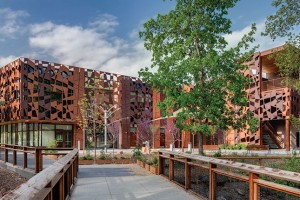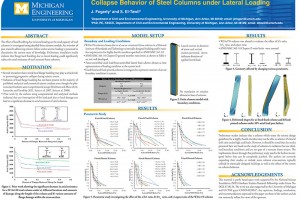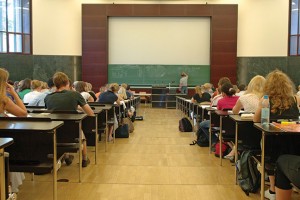This text comes with high regard, being supported by engineer practitioners, engineering firms and professional organizations. If you think of forensic engineering as simply the investigation and study of building structural failures, you will be surprised at the breadth of material discussed. I use the term text rather than book because, in 140 pages, the reader will be exposed to far more than the process for the investigation of failures. This publication is heavily weighted with information of interest to engineers providing expert testimony. It is apparent early into the read that few, if any, universities offer a course in such depth. …
Author Archives : structuremag
About the author ⁄ structuremag
A Crash Course in Engineering and Architecture
By Edward Denison and Ian Stewart
I must preface my review of How To Read Bridges by confessing that I am a Bridge Engineer who “reads” bridges every day. I was intrigued when afforded the opportunity to review this book, which summarizes the introductory aspects of bridge engineering… and is written for readers with various types of backgrounds. …
By Barry B. LePatner; with special comments by Hon. James L. Oberstar, Chairman, U.S. House Committee on Transportation and Infrastructure; forward by Robert Puentes, Sr Fellow, Metropolitan Policy Program, Brookings Institution
Foster Publishing, New York, in association with University Press of New England to be published Nov 2010 …
A Guide to Building Information Modeling
For Owners, Managers, Designers, Engineers, and Contractors
By Chuck Eastman, Paul Teicholtz, Rafael Sacks, and Kathleen Liston
By Abi Aghayere and Jason Vigil
This book is intended as a reference for a one-semester wood design course for engineering students. However, it also provides an excellent primer on the basics of wood design for engineers with little or no background in that subject. The authors, a professor and a practicing engineer, have put together a reference that provides the basic theory behind wood design with heavy emphasis on design application. The topics covered include design loads and design of beams, girders, columns, diaphragms, and connections. …
At their annual meeting in Atlanta, GA on September 20, NCSEA announced the winners of the 2013 Excellence in Structural Engineering Awards. This awards program annually highlights some of the best examples of structural ingenuity throughout the world. Awards are divided into eight categories: four building categories which are separated based on construction cost, bridge or transportation structures, international structures, forensic-renovation-retrofit-rehabilitation structures and an “other” category which encompasses all types of non-building or bridge structures. In each category, up to three award winners were named with one project named the Outstanding Project. All structures must have been completed, or substantially completed, within the past three calendar years. …
Each year attendees at the ASCE/SEI Structures Congress recognize excellent technical session presentations and posters through the “Best of the Best” program. By casting ballots available to all attendee, a Best Presentation and Best Poster are chosen. In addition, there is a drawing to award one of these voters a Kindle Fire. The votes are collected and tallied by the SEI Public Relations Committee. The winners were announced at the Closing Plenary Session on Saturday, May 4, 2013. The lead authors of the Best Presentation and Best Poster each receive complimentary registration for Structures Congress 2014, taking place April 3-5, 2014 in Boston, Massachusetts. …
The National Society of Structural Engineers Associations (NCSEA) is pleased to present the 2013 survey of schools and colleges throughout the United States. The schools surveyed offer educational opportunities for students desiring to become professional civil/structural engineers. NCSEA has sponsored the survey since 2002. …
The article “Foundations for Metal Building Systems” in the July 2013 issue reminded me of a case from a couple of decades ago. A geotech friend called with a question about a steel gable-frame building that had suffered significant distress. The foundation had been designed (by someone else) as a a hairpin and slab tie system, and it probably would have worked. However, some salesman convinced the contractor that random fiber reinforcement was a good as welded wire reinforcement, and this substitution was made without input from the designers. The result was huge cracks at the ends of the hairpins, significant lateral spread of the column bases, and significant vertical deflection of the rood structure. I don’t know what the ultimate disposition of the case was. …
After reading Lara K. Schubert’s series of articles on the role of gender in structural engineering in
the February and April issues of STRUCTURE magazine, I find myself in complete disagreement
with the author. Neither earthquakes nor hurricanes nor gravity care about gender and, regardless
of the sex of the engineer, clocks stubbornly refuse to tick more slowly as deadlines approach. …



